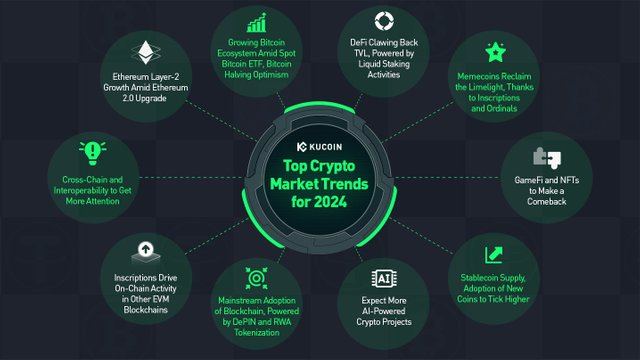Understanding the Lifecycle of a Cryptocurrency Projects In 2024
Introduction
Cryptocurrency projects, much like any tech startup, go through distinct stages of development. Understanding these stages can help investors and enthusiasts gauge the maturity and potential of different projects. In this post, we'll break down the typical lifecycle of a cryptocurrency project and what to expect at each phase.
Stage 1: Concept and Whitepaper

The lifecycle of a cryptocurrency project begins with an idea. Founders identify a problem or an opportunity in the market and propose a blockchain-based solution. This concept is then detailed in a whitepaper, which outlines the project's goals, technology, use case, and roadmap.
Key Indicators:
Clear problem statement and solution
Detailed technical framework
Defined tokenomics and governance model
Stage 2: Initial Coin Offering (ICO) / Token Generation Event (TGE)
After the concept is solidified, the project often seeks initial funding through an ICO or TGE. This allows early investors to purchase the project's native tokens, providing the necessary capital to start development. This stage is critical for establishing the project's financial foundation.
Key Indicators:
Successful fundraising campaign
Growing community interest
Transparent allocation of funds
Stage 3: Development and Alpha/Beta Testing
With funds secured, the project moves into the development phase. This involves building the blockchain infrastructure, creating the necessary software, and developing smart contracts. During this phase, the project may release alpha or beta versions for testing.
Key Indicators:
Regular development updates
Release of alpha/beta versions
Active feedback from testers and early adopters
Stage 4: Mainnet Launch
The mainnet launch is a significant milestone, marking the transition from testing to a fully operational blockchain network. The project’s token is now live on its own blockchain, and users can start transacting and utilizing the platform.
Key Indicators:
Successful mainnet launch
Increase in user adoption and transactions
Partnerships and integrations with other platforms
Stage 5: Growth and Scaling
After the mainnet launch, the project focuses on scaling and expanding its user base. This involves optimizing the network for performance, enhancing security features, and potentially integrating with other blockchain projects. Marketing efforts are ramped up to attract more users and developers.
Key Indicators:
Network performance improvements
Increased user and developer activity
Strategic partnerships and ecosystem growth
Stage 6: Maturity and Long-Term Sustainability
As the project matures, it aims to achieve long-term sustainability. This stage involves ongoing development, community governance, and ensuring the project remains relevant in a fast-evolving crypto landscape. Successful projects will have a robust user base, continuous innovation, and a self-sustaining economy.
Key Indicators:
Active and engaged community
Continuous upgrades and innovations
Strong market presence and real-world use cases
Conclusion
Understanding the lifecycle of a cryptocurrency project can provide valuable insights into its current stage and future potential. By recognizing the key indicators at each phase, you can make more informed decisions about which projects to follow and invest in. Stay informed and navigate the crypto space with a deeper understanding of project development.